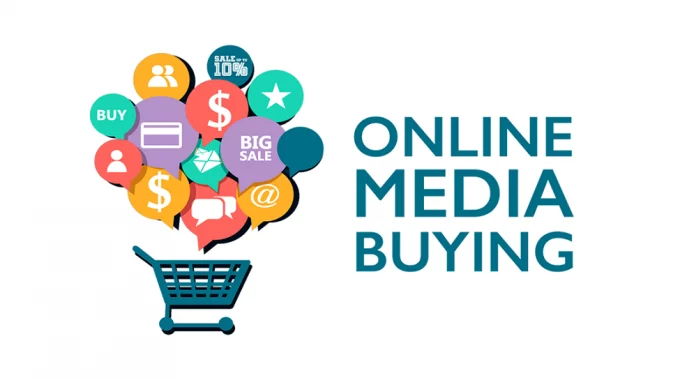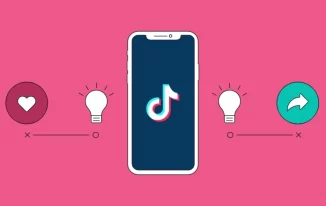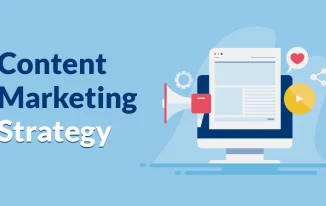People often underestimate how difficult a marketer’s job can be. They do not just advertise the business, but they also have to create a long-term marketing strategy.
Choosing the wrong marketing strategy leads to failure after planning the long-term strategy and developing the marketing content. After that, marketers move forward with the media buying process.
What is media buying?
Media buying is the process of securing ideal locations, channels, placements, time, and frequency to run ads that speak to the target audience. Before starting the media buying process, you must study your brand’s target audience.
Only target channels that are most relevant to the brand’s audience. Your audience has a specific personality, and as a result, they are more likely to come in contact with some channels than others.
You have to choose the timing according to when most people will be able to view the ad. Otherwise, ads will waste your money as you will not see any results.
Earlier media buying only included traditional mediums such as television, radio, print, and billboards. However, the digital age has changed things.
Now businesses invest extensively in digital marketing activities. Digital marketing is more affordable compared to traditional marketing activities.
You need to ensure that the context of the ad matches the medium. For example, if you are running an ad for lingerie, placing it on a fashion blog will be beneficial.
Google Adsense chooses the right websites to place your digital ads on. However, when investing in traditional marketing, you have to make the calls. When done correctly, media buying can help your brand gain instant traction.
Customers will not spend money on your products if you do not educate them. Each customer has the power to make a decision. When indulging in media buying, you have to ensure that the maximum number of target customers make a decision in your brand’s favor.
Process of media buying
There are many steps involved in the media buying process:
- Allocate a specific amount of funds to media buying. You should know how much out of the total marketing budget you are spending on media buying.
Once you have the funds, you can begin the process. Of course, the number of funds you spend can always increase later. So do keep a little space for additional costs in your budget.
- Send requests for proposals to valid media houses. Then mix your marketing efforts to get the best possible results.
- Finalize the order and create an insertion order.
- Send the creative content to the media outlets, and finalize the size of each ad.
- Launch the campaign and monitor analytics to know the success rate.
- When you find out that something is not right because of poor performance, you should research what you are doing wrong and then make the changes accordingly. First, monitor the overall campaign against the key performing indicators (KPIs).
- Ensure that the money you are spending is consistent with the money you plan to spend according to the budget.
- Ensure that the costs and “make goods” for underdelivering ads are consistent with each other.
- If the media buying process worked in your brand’s favor, then it’s your brand’s responsibility to analyze what worked in your favor. The same is true if media buying does not yield positive results.
The importance of media buying
Media buying enables you to reach new customers affordably. You can appear in front of the customers at the right time and in the right place.
To sell your products, you need to create a story, but to take the story in front of the audience, you need media buying. Before someone is about to do business with your competitors, it can be beneficial to present your brand as an alternative.
You can do this by placing ads on a competitor’s website. Unfortunately, it is rare for people to take action by just hearing about your brand once.
With the help of media buying, you can ensure that target customers see your ads more than once. Media buying is vital for your business if you want to move past the small startup level.
Factors to consider when you are thinking of buying media
You can consider a few important factors when you are in the middle of media buying.
Keep your brand’s interests in mind
When working with a third-party media buyer, it’s important to ensure that the person is skilled and trustworthy. They should also have high-quality relationships with media houses that can get you good ad placement at an ideal time.
If the person you work with is untrustworthy, they may charge you more money than required. This will lead to a poor ROI. The media houses that your brand associates itself will create the brand’s story, so you cannot get started with a poor media buyer or media houses.
You need to be skeptical and protective of your brand when you are starting out. You do not need to get great results from your first campaign but ensure that no harm is done too.
Marketers often create content in advertisements that can be offensive to the audience. This leads to the brand getting a brand name. So you also have to ensure that the story or copy in the ad is not offensive.
Optimize the media buying process
Optimization is the process of adjusting frequency and bids to improve performance. If you select programmatic ad buying, then optimization is automatically done for you.
This way, you get the best results without micro-managing the process. You just have to set the parameters on which you want to run the campaign and then wait for launch.
Create continuity
For the best ROI, your marketing mix and creatives need to work well together. During advertising, you are putting your brand’s story out there. The story needs to be complete and connected across the entire marketing mix.
When you can achieve this feat, you have told your brand’s story and created a persona for your brand in the prospect’s mind. Next time, when a potential customer needs a product or service, they will think of you.
As they will think that this brand is familiar and trustworthy. People do not buy products from brands they have never heard of because they lack trust or familiarity.
If you see a product for the first time in a store, you are highly unlikely to make that purchase. Most consumers don’t take a leap of faith during shopping. That’s why creating cohesion is crucial.
Monitor analytics
You should know which marketing campaigns and creatives provide you with the best results at the lowest cost. If you know this, you do not have to waste money experimenting the next time.
Instead, you should figure out what works and repeat it for good results. To figure this out, you have to monitor your campaign analytics. You cannot just start the media buying process and be happy with whatever results you are getting.
To make important decisions, you need to know the cost per acquisition, ROI, traffic, and other analytics. Go through the analytics of old campaigns before buying media for a new campaign.
Trends in media buying
In the last few decades, media buying has significantly evolved. Previously marketers used to buy an ad placement in a journal, newspaper, television program, or billboards.
Now you can buy ads on search engines, social media, websites, streaming services, and other digital channels. Creating content has become more accessible, so media buying has become highly affordable.
You can also get some great results with digital marketing campaigns. So while the costs are low, you still stand to gain a lot. This means that digital marketing campaigns have a great ROI.
You can determine how your customers discovered your brand through the website or social media insights. Traditional media buying was not this data-oriented, and it never dealt with such a huge quantity of data.
Related Post: Traditional Media vs New Media: Which Strategies Should Be Included In Your Marketing Scheme?
Programmatic advertising is the process of buying and selling ad inventory in real-time by using an auction-based tool. You can now pay for the impressions according to the value of the viewer.
Not every viewer has the same value because some never intended to buy your product. So now you pay according to the viewer’s value instead of a fixed CPM.
This is highly beneficial for the marketer. If you are paying more for an impression, then you may gain something from that too.
Another popular trend is social media buying. You can promote your brand on social media channels like Instagram, Facebook, Reddit, Twitter, TikTok, Snapchat, and more. You will get views according to the campaign’s budget when you pay to boost your brand's views.
Social media marketing is highly affordable, and even regular people do it. Then there are in-demand side platforms (DSPs). When you work with a DSP, you get excellent customer service, insights, analysis, and measurement tools.
You should connect each digital channel of your brand. If someone visits your website, they should be able to view all your social media channels and your newsletter.
You can use Linktree for social media and upload all the essential links of your brand there. This way, your audience will stay connected with you in the digital world.





